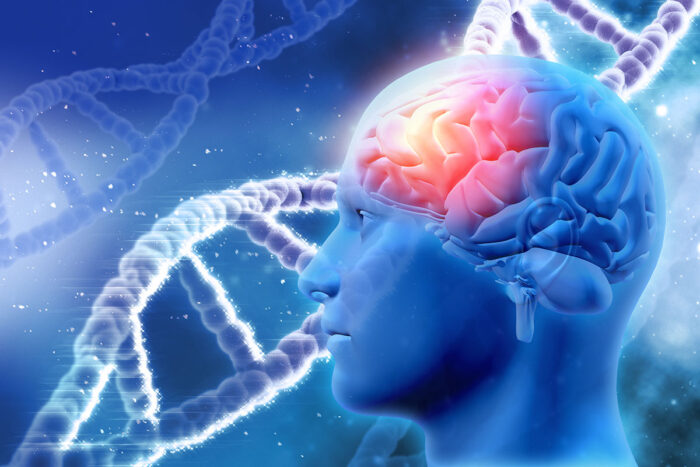$9 million to fund study of ‘jumping genes’ in Alzheimer’s
Researchers from several labs to study role of transposable elements
 Getty Images
Getty ImagesInvestigators at Washington University School of Medicine in St. Louis and at the University of Texas at San Antonio have received a five-year, $9 million grant from the National Institute on Aging of the National Institutes of Health (NIH) to identify how so-called transposable elements in DNA can contribute to Alzheimer’s disease.
Scientists have identified a handful of gene mutations that cause or contribute to the onset of Alzheimer’s disease. But many scientists suspect that other DNA changes may help drive Alzheimer’s-related damage to brain cells and lead to symptoms of confusion and memory loss experienced by patients.
In particular, the researchers want to understand how segments of DNA that hop around in the genome — so-called transposable elements — influence Alzheimer’s disease. A five-year, $9 million grant from the National Institute on Aging of the National Institutes of Health (NIH) will fund research led by several investigators at Washington University School of Medicine in St. Louis and at the University of Texas at San Antonio to answer that question.
Transposable elements are believed to have come from very old viruses and bacteria that infected our ancestors millions of years ago. This foreign DNA became intertwined with, although not exactly part of, the human genome. First discovered in the 1940s, transposable elements have been linked to diseases such as hemophilia, Duchenne muscular dystrophy, a predisposition to cancer and, more recently, to Alzheimer’s disease.
“We want to characterize the DNA changes these transposable elements contribute to, and we want to understand whether some gene-altering techniques may block the dysregulation associated with these transposable elements to stop or delay Alzheimer’s pathology,” said Carlos Cruchaga, PhD, a principal investigator in the Department of Psychiatry at Washington University. “We are integrating data from human cells and from animal models to fully understand and characterize these changes.”
Cruchaga, the Barbara Burton and Reuben M. Morriss III Professor, is one of four Washington University principal investigators involved in the new research effort. The Cruchaga lab is studying tissue from the brains of deceased participants in the Dominantly Inherited Alzheimer Network (DIAN) project. These participants had genetic mutations that all but guaranteed they would develop early-onset Alzheimer’s disease.
Cruchaga’s lab also will study stem cells that will be made into neurons in culture. These neurons will have mutations in various Alzheimer’s-causing genes. The goal is to compare the newly made neurons that have mutations to the much older neurons taken from the brains of participants in the DIAN studies to determine whether some of the damage associated with those changes can be prevented or reversed.
Andrew Yoo, PhD, an associate professor of developmental biology, pioneered a technique to create aging neurons from skin biopsies. The skin cells are made into stem cells, which then can be treated with various factors to become neurons. As part of this project, skin-derived neurons from individuals with specific mutations will be studied to identify transposable changes that may contribute to Alzheimer’s disease.
Celeste Karch, PhD, an associate professor of psychiatry, will focus on brain cells called microglia, which also have been linked to genetic variants that increase risk for Alzheimer’s. Her lab will study how transposable elements might contribute to damage to microglia that may drive Alzheimer’s pathology.
Ting Wang, PhD, the Sanford and Karen Lowentheil Distinguished Professor of Medicine, is one of the world’s experts on studying transposable elements and epigenetic changes in a number of disorders. Unlike mutations, epigenetic changes are caused by modified expression of genes rather than alterations of the genetic code itself. Because they do not alter the genome’s DNA sequence, they could be reversible.
“Characterizing transposable element changes is complex and requires expertise in many areas,” Cruchaga explained. “The Wang lab will analyze and quantify what’s going on with transposable elements in cells that all of our labs will study.”
The principal investigators also will incorporate the DNA changes present in tissue from human brains, as well as microglia and neurons in culture, into a fruit fly model. Those experiments will be led by Bess Frost, PhD, at UT-San Antonio. In flies, changes and damage caused by transposable elements will appear much more quickly than in other animal models, and the researchers will be able to use genetic tools, such as CRISPR, to modify alterations caused by transposable elements to see whether it’s possible to change or delay Alzheimer’s pathology.
“The ultimate goal is to target transposable elements in a therapeutic way,” Cruchaga said. “We don’t believe transposable elements trigger the disease. But once they are activated, we think they can accelerate events that cause neuronal death. If we can block the transposable elements, we might delay the disease process.”






